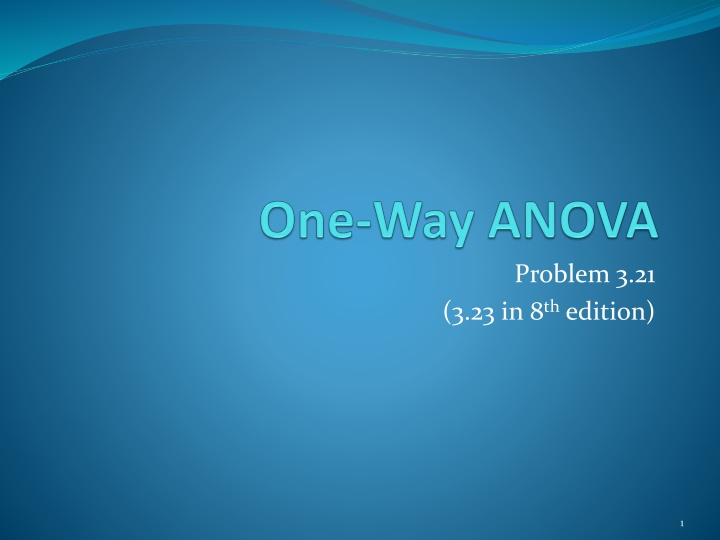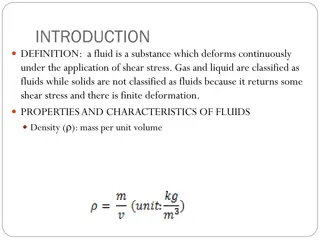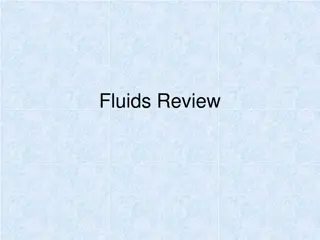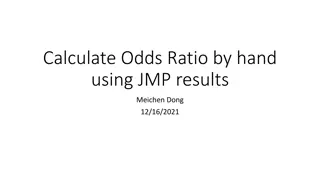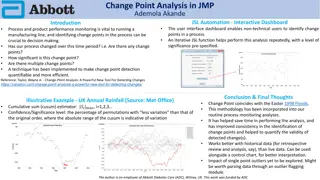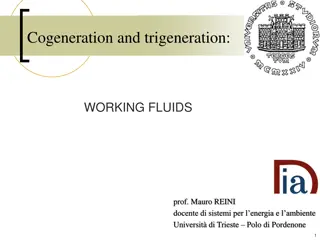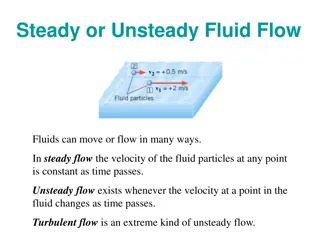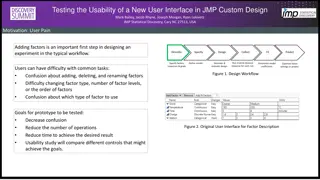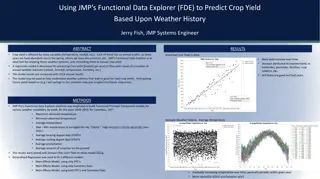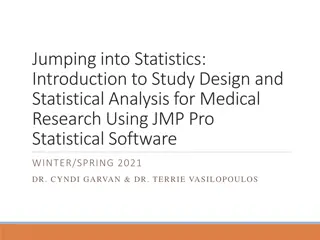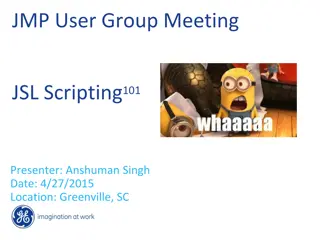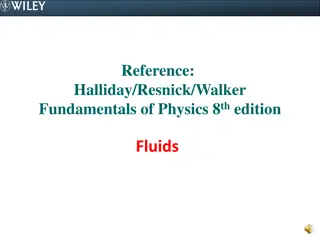Insulating Fluids: Data Analysis in JMP
The content provides insights into analyzing partial data on the life of insulating fluids using a linear model. It discusses estimating mean responses, making plots, and conducting paired t-tests and experiment-wise procedures. The comparison-wise versus experiment-wise approaches are explored, emphasizing the importance of statistical logic and significance testing.
Download Presentation

Please find below an Image/Link to download the presentation.
The content on the website is provided AS IS for your information and personal use only. It may not be sold, licensed, or shared on other websites without obtaining consent from the author.If you encounter any issues during the download, it is possible that the publisher has removed the file from their server.
You are allowed to download the files provided on this website for personal or commercial use, subject to the condition that they are used lawfully. All files are the property of their respective owners.
The content on the website is provided AS IS for your information and personal use only. It may not be sold, licensed, or shared on other websites without obtaining consent from the author.
E N D
Presentation Transcript
Problem 3.21 (3.23 in 8thedition) 1
Model: Life (the Response Variable) is a linear model of Fluid Type, i.e. = + + Y ij i ij where the mean Life response of Fluid Type i is = + i i 3
Estimates of terms: We can estimate the mean response for a Fluid Type from the data by = + iY . i i which is called the Predicted Value and Y Y . ij ij i which is called the Residual Value. 4
What if we looked at paired t-tests anyway (despite a large p-value) to compare means? 9
Suppose we used an Experiment-wise Procedure (Tukey is widely used). 10
So what happened? Generally do a means comparison only if the F-test is significant, there is a question of logic here. Even if we ignored logic (I ve seen it happen) and did the means comparisons, the two procedures do not agree. The Tukey procedure finds fewer differences. 11
Comparison-wise vs. Experiment-wise: Comparison-wise sets alpha for each comparison. Experiment-wise sets alpha over all comparisons in the experiment. Remember the Bonferroni Inequality! 12
Diagnostics (yes we make assumptions) In order for the tests of significance to be meaningful, it is necessary that our data satisfy certain assumptions regarding the distribution of experimental error. In particular: ??? ??????(0,?2 We also assume that the experimental error terms are independently and identically distributed (i.i.d. in Statistic ). 13
Two main diagnostic checks: Equality of Variances- We check this visually by the appropriate plot(s) and Statistically by a test for equal variances within each Treatment group. Normality of experimental error terms- We check this visually by a Normality plot (q-q plot) and Statistically by a test for Normality. Since we don t know experimental error, we use the residuals as a surrogate since Y Y . ij ij i 14
Equality of variances It is known from experience that the usual problem with the equal variance assumption is that variances may not be constant over all Trt. groups. This is usually an artifact of the measurement system such as radio-labeling or PCR. If there is a problem the variance is usually a function of the Trt. group mean. Start by plotting Residuals vs. Predicted values. 15
Any ANOVA program will output the Predicted and Residual values 16
Usually it is Residuals vs. Predicted values which provides the most informative graph 18
If you cant see it in the data its usually not there, but let s test variances anyway 19
As we see a number of tests exist Bartlett s and Levene s tests are commonly used (maybe Bartlett more often). They almost always give the same answer. They were designed to test against different possible alternatives to constant variance. The most common problem is variance increasing with the mean, which is an artifact of many measurement systems. There are sometimes ceiling or floor effects. 20
